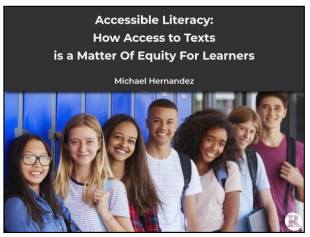Read the text, and analyse assertions I and II to answer. ...
Próximas questões
Com base no mesmo assunto
Ano: 2023
Banca:
Instituto Consulplan
Órgão:
CBM-SC
Prova:
Instituto Consulplan - 2023 - CBM-SC - Oficial |
Q2078859
Inglês
Read the text, and analyse assertions I and II to answer.

The pandemic and the remote learning that followed highlighted what educators have known for a long time: that learning is a highly individualized endeavor, and everyone learns in different ways and at different speeds. At a time when many parents and educators are concerned about students falling behind due to covid-related illness or school closures, the stakes for keeping kids on track couldn’t be higher.
Even before the pandemic, schools’ reliance on one-sizefits-all learning activities and assessments had calamitous results for students. Students who are continuously behind their peers in reading level become defeated and lose interest in learning – a pattern that continues into their adult life. With 85% of all curriculum based on text(books, handouts, assessments), providing students with an equitable education also means providing an equitable experience with literacy and reading comprehension. The good news is that there is a solution: personalized digital text. This can make a huge difference for students who are struggling readers, both in terms of academic achievement and with the confidence gained by becoming a successful reader. And it turns out that these features benefit all students, not just struggling readers. Even students who are already successful can become more efficient and literate readers.
Tech companies like Adobe are already developing solutions to literacy inequities. Apps like Acrobat Reader have integrated “Liquid Mode”, where users can customize the size, character and line spacing of digital texts in PDF documents. The ability of textbook companies, websites and digital book publishers to adopt similar features and standards provides opportunities for learners of all levels to reach their true potential. The problem with literacy may not be the reader, but the reading material.
(Available: https://readabilitymatters.org/articles/accessible-literacy. Adapted.)
I. Technology is enabling the reading of texts which display lexicon issues. II. Evaluation is mostly grounded in texts, and thus depends on literacy command.
Point out the correct item

The pandemic and the remote learning that followed highlighted what educators have known for a long time: that learning is a highly individualized endeavor, and everyone learns in different ways and at different speeds. At a time when many parents and educators are concerned about students falling behind due to covid-related illness or school closures, the stakes for keeping kids on track couldn’t be higher.
Even before the pandemic, schools’ reliance on one-sizefits-all learning activities and assessments had calamitous results for students. Students who are continuously behind their peers in reading level become defeated and lose interest in learning – a pattern that continues into their adult life. With 85% of all curriculum based on text(books, handouts, assessments), providing students with an equitable education also means providing an equitable experience with literacy and reading comprehension. The good news is that there is a solution: personalized digital text. This can make a huge difference for students who are struggling readers, both in terms of academic achievement and with the confidence gained by becoming a successful reader. And it turns out that these features benefit all students, not just struggling readers. Even students who are already successful can become more efficient and literate readers.
Tech companies like Adobe are already developing solutions to literacy inequities. Apps like Acrobat Reader have integrated “Liquid Mode”, where users can customize the size, character and line spacing of digital texts in PDF documents. The ability of textbook companies, websites and digital book publishers to adopt similar features and standards provides opportunities for learners of all levels to reach their true potential. The problem with literacy may not be the reader, but the reading material.
(Available: https://readabilitymatters.org/articles/accessible-literacy. Adapted.)
I. Technology is enabling the reading of texts which display lexicon issues. II. Evaluation is mostly grounded in texts, and thus depends on literacy command.
Point out the correct item